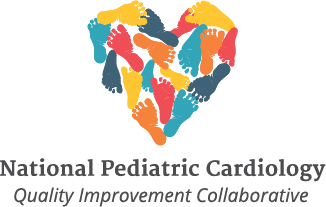
THE TUBE WEANING TOOLKIT
The Tube Weaning Toolkit
About the Project
This toolkit was inspired by and grounded in tube weaning research completed using the NPC-QIC database and quality markers, such as aggregate data surrounding the measure of “all oral feeding by first birthday.” Resources and methods developed and tested by NPC-QIC pilot programs and test centers are available below.
How to Use
Review all modules and resources in the order they appear below as a comprehensive guide to tube weaning in patients with congenital heart disease. This is a half-day training that will take approximately four hours to complete.
Additional Resources
Extensive case series recordings on tube weaning are available on SharePoint.
A more detailed guide to the scope of the tube weaning project and available tools is available here.
Have questions, comments, or want to engage with others within NPC-QIC on a tube weaning topic? Access our tube weaning discussion board on SharePoint.
If you have any questions about this toolkit, please contact us at info@npcqic.org.
Phase 1: Preparation
The Preparation phase starts at the time of tube placement (i.e., when tube feeding begins) through the beginning of a patient’s wean.
Parent Testimonial
“Our tube wean went above and beyond our expeditions. Having the structured program gave us the confidence to take the right steps, and knowing we had our team’s support made it all that much more successful. Josh went from being almost completely tube fed to loving every bite of food and often (almost always!) out-eating his twin brother. Weaning from a feeding tube has given us a sense of freedom and ‘normalcy’ that we are so grateful for.”
—Parent, Lurie’s Children’s Hospital
How To Prepare For Tube Weaning
How to prepare families and clinicians for the tube weaning process.
Module: (24 minutes)
Promoting Positive Oral & Mealtime Experiences
Module: (25 minutes)
Evaluation of Growth & Strength
Module: (17 minutes)
Troubleshooting Feeding Intolerance
Module: (14 minutes)
Additional Resources
Ready to Wean Checklist
Intended for providers to use in preparation for tube weaning for clear communicationTube Weaning Frequently Asked Questions
Intended for providers for additional information on tube weaning processes and benefits
Phase 2: Ingredients
The Ingredients phase details the weaning process and how to encourage hunger in combination with developing appropriate oral feeding skills and positive feeding experiences .
Who Should I Include In My Team?
How to structure a tube weaning program and the appropriate team members to include.
Parent Participation
Parent partners ensure improved patient outcomes.
Key Ingredients of the Tube Weaning Process
Module: (13 minutes)
Troubleshooting Challenges
Module: (16 minutes)
Behavioral Interventions
Navigating feeding refusal and picky eating in toddlers
Additional Resources:
Tube Weaning Worksheet
A detailed worksheet for tracking a patient’s feeding schedule, phases of the wean, anthropometric information, and potential red flags.
Phase 3: Follow Up
Considerations once the tube wean is complete.
Parent Testimonial
“I want you to know how truly grateful I am that you have invested your time in my son and have given him this opportunity. As a mom, you just want what's best for your child and to give them every chance to succeed. I know he is challenging, but I do believe he will eat on his own! Thank you for believing in him and not giving up! Thank you for being interested in his future and wanting him to be successful! Thank you for being on this journey with us! I am forever thankful for each of you for all you have done for our family”
—Parent, Cincinnati Children’s Hospital
Phase 4: Testing
Implementing a standard tube weaning process can lead to necessary and ongoing process changes. Elective materials to continue to improve your process are below.
Provider Testimonial
“Being a test center for the tube weaning project has fueled a passion that already existed in our center but has propelled that passion into an actionable process that we have been able to lay out and structure. Seeing the successes of other centers has helped us to pool the resources that we have so we can also do right by these patients and get them enjoying meals with their families.”
—Nicole Coolidge, Nurse Practitioner, Children’s Healthcare of Atlanta
Resources:
Extensive Data Collection Set
In-depth data collection to track and reflect on patient outcomes



